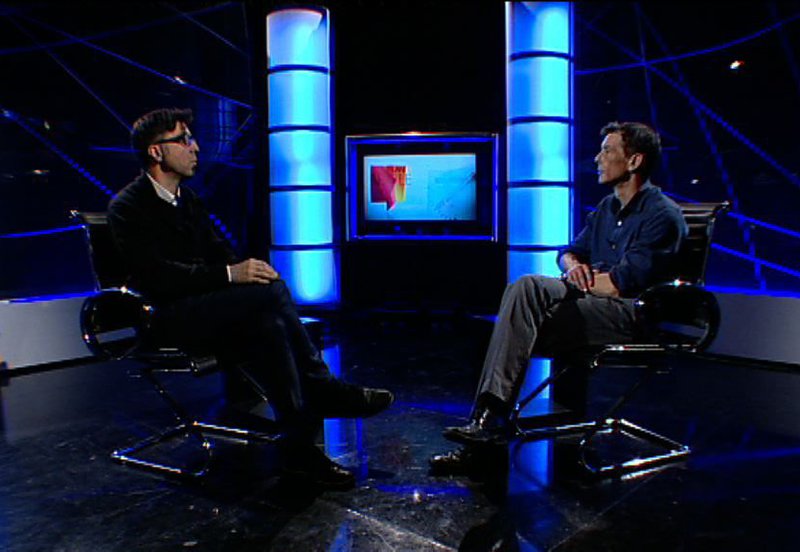Interview
Making the most of reality
Every Monday at 6.30pm, El Punt Avui TV airs the interview series Going Native. This week, Neil talks to creative director Toni Garcia, from the BRB International animation production company
What does a creative director do exactly?
Making an animated TV show needs lots of people to work on it, so we have a big team. My role is to find the right people for each new show and then to supervise and coordinate the whole team.
What are you working on at the moment?
We are focusing on Invizimals, which is based on characters from a video game for Sony Playstation devices. It was originally created by a Catalan studio, Novarama. Then we got the idea of doing a TV show. Inizimals uses augmented reality, so you use your device to see the characters around you. In the TV show, markers appear and if you point your mobile device at the screen, you can capture an Invizimal and play with that character in the video game.
How important is that type of interaction nowadays?
It is not only important, it's the way to survive. People love the engagement of video games, so we are bringing the creativity of video games and the creativity of animation together to create something new: a multi-platform experience.
Is that the best way to maximise your audience?
Yes, and the shortcut is the internet. When we were kids, there was a TV and the time of the show. Now if someone loves Invizimals they go online and get the episode on demand. With the video game it's the same: you download the app and play when and where you want.
There must be a lot of pressure to keep up?
There is. We need a couple of years to finish a good animated TV show. Once you have something new, everyone wants it immediately. When I started 25 years ago there was no pressure, now it is totally different.
How else have things changed in that time?
In the 1980s we created shows like Dogtanian, which in Spain were watched by more than 20 million people on Saturday afternoons. The whole family would watch it together. It's different now, as everyone wants their own content, which means multiple content for each target group. Techniques have also changed. At the beginning we did everything with pencils and brushes, filming frame-by-frame. Now it is easy to do animation on a computer, but that does not mean it will be successful. You need talent, you have to create quality and tell interesting stories. This has not changed, because if you do not have interesting stories, it doesn't matter what graphics you use, it will fail. Storytelling is the key.
What is the process of making an animated series?
We start by brainstorming as a team and get an idea about the characters and the story, and we create what we call a ‘bible'. This ‘bible' is the basis of the show and has all the information, the target, the format, the characters and their backstories. You then show it to possible partners – Disney, Universal or whatever. If they like it and come on board, then you can start producing it.
Now content is global, how do you serve different tastes?
In the past 25 years we have developed a global idea of what entertainment is so we now have the same idea of entertainment. The cultural barriers are starting to come down.
Can animation surpass the possibilities of live action?
People of our generation grew up with cartoons and comic books, and we still watch animation, as we can see from the millions of hits cartoons get on YouTube. Animation not only interests kids. And so what we are trying to do is to go a step further and create user-generated content, which means you might watch the TV show and import the characters into your game, and then you can create your own show with the same characters, adding your voice and sharing it online. That is the future and animation has an unbelievable potential for that.
Will virtual reality allow us to take part in a cartoon?
Yes definitely. If you go to see a film and you love it, then you will be able to come home, put your glasses on and begin playing in the world you have just been watching. But first you need something that makes you comfortable in this world. And that requires storytelling to make it interesting and to make you want to explore it.
Is this where things are going next in animation
There are two ways to continue producing animation. One is online video on demand, making content available to people when they want it. And the other is, amazingly, feature films. People still love going to the cinema, not least because it is a social activity. Yet, that needs to be supported with interactivity outside of the cinema. Video games and animation are becoming the same things. So, we are trying to offer a nice story that you can enjoy and that you will then want to experience for yourself, which is the meeting point between video games and interactive animation.
Leave a comment
Sign in.
Sign in if you are already a verified reader.
I want to become verified reader.
To leave comments on the website you must be a verified reader.
Note: To leave comments on the website you must be a verified reader and accept the conditions of use.

